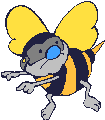Grade 4 |
|
1.1 3 Select a focus, an organizational structure, and a point of view based upon purpose,
audience, length, and format requirements.
1.22 Create multiple-paragraph compositions:
a. Provide an introductory paragraph.
b. Establish and support a central idea with a topic sentence at or near the beginning of
the first paragraph.
c. Include supporting paragraphs with simple facts, details, and explanations.
d. Conclude with a paragraph that summarizes the points.
e. Use correct indention.
|
1.2 2 Identify and correctly use verbs that are often misused (e.g., lie/lay, sit/set, rise/raise),
modifiers, and pronouns.
|

Key Standard
1.3 4 Use traditional structures for conveying information (e.g., chronological order, cause and effect, similarity and difference, posing and answering a question).
|
|
|
1.42 Write fluidly and legibly in cursive or joined italic.
|

References
1.5 1 Quote or paraphrase information sources, citing them appropriately.
1.6 2 Locate information in reference texts by using organizational features (e.g., prefaces,
appendixes).
1.7 4 Use various reference materials (e.g., dictionary, thesaurus, card catalog, encyclopedia,
online information) as an aid to writing.
1.8 1 Understand the organization of almanacs, newspapers, and periodicals and how to use
those print materials.
|
|
1.9 2 Demonstrate basic keyboarding skills and familiarity with computer terminology
(e.g., cursor, software, memory, disk drive, hard drive).
1.10 1 Edit and revise selected drafts to improve coherence and progression by adding, deleting,
consolidating, and rearranging text.
|
|
1.4 Write fluidly and legibly in cursive or joined italic.
|
|
3.9 Demonstrate basic keyboarding skills and familiarity with computer terminology (e.g., cursor, software, memory, disk drive, hard drive).
Evaluation and Revision
3.10 Edit and revise selected drafts to improve coherence and progression by adding, deleting,
consolidating, and rearranging text.
|
|
2.1 Write narratives:
a. Relate ideas, observations, or recollections of an event or experience.
b. Provide a context to enable the reader to imagine the world of the event or experience.
c. Use concrete sensory details.
d. Provide insight into why the selected event or experience is memorable.
|
|
|
|
Grade 4 |
|
1.1 3 Identify and correctly use prepositional phrases, appositives, and independent and dependent clauses; use transitions and conjunctions to connect ideas.
|
|
1.2 2 Identify and correctly use verbs that are often misused (e.g., lie/lay, sit/set, rise/raise), modifiers, and pronouns.
|
1.34 Use a colon to separate hours and minutes and to introduce a list; use quotation marks around the exact words of a speaker and titles of poems, songs, short stories, and so forth.
Capitalization
1.4 2Use correct capitalization.
|
|
1.5 Present effective introductions and conclusions that guide and inform the listener’s
understanding of important ideas and evidence.
|

Spelling |
1.5 1 Spell roots, suffixes, prefixes, contractions, and syllable constructions correctly.
|
|
|
|

Formal Narrative
Writing
2.1 Write narratives:
a. Relate ideas, observations, or recollections of an event or experience.
b. Provide a context to enable the reader to imagine the world of the event or experience.
c. Use concrete sensory details.
d. Provide insight into why the selected event or experience is memorable.
|

Lit Response
2.2 Write responses to literature:
a. Demonstrate an understanding of the literary work.
b. Support judgments through references to both the text and prior knowledge.
|

Vocabulary
2.3 Use traditional structures for conveying information (e.g., chronological order, cause and effect, similarity and difference, posing and answering a question).
|

References
1.6 2 Locate information in reference texts by using organizational features (e.g., prefaces,
appendixes).
1.7 4 Use various reference materials (e.g., dictionary, thesaurus, card catalog, encyclopedia,
online information) as an aid to writing.
|

References
2.3 Write information reports:
a. Frame a central question about an issue or situation.
b. Include facts and details for focus.
c. Draw from more than one source of information (e.g., speakers, books, newspapers,
other media sources).
2.4 Write information reports:
a. Frame a central question about an issue or situation.
b. Include facts and details for focus.
c. Draw from more than one source of information (e.g., speakers, books, newspapers,
other media sources).
Research and Technology
1.5 Quote or paraphrase information sources, citing them appropriately.
1.6 Locate information in reference texts by using organizational features (e.g., prefaces,
appendixes).
1.7 Use various reference materials (e.g., dictionary, thesaurus, card catalog, encyclopedia,
online information) as an aid to writing.
3.8 Understand the organization of almanacs, newspapers, and periodicals and how to use
those print materials.
|

Penmanship and Word Processing
3.9 Demonstrate basic keyboarding skills and familiarity with computer terminology
(e.g., cursor, software, memory, disk drive, hard drive).
Evaluation and Revision
3.10 Edit and revise selected drafts to improve coherence and progression by adding, deleting,
consolidating, and rearranging text.
|
|
|
Grade 4 |

Q&A
1.1 Ask thoughtful questions and respond to relevant questions with appropriate elaboration
in oral settings.
|
|
1.2 Summarize major ideas and supporting evidence presented in spoken messages and
formal presentations.
|
|
1.3 Identify how language usages (e.g., sayings, expressions) reflect regions and cultures.
|
1.4 Give precise directions and instructions.
|
|
1.5 Present effective introductions and conclusions that guide and inform the listener’s
understanding of important ideas and evidence.
|
Organization and delivery of oral communication
|
1.4 Select a focus, organizational structure, and point of view for an oral presentation.
|
|
1.9 Use volume, pitch, phrasing, pace, modulation, and gestures appropriately to enhance meaning.
|
Analysis and Evaluation of Oral and Media Communications
1.6 Use traditional structures for conveying information (e.g., cause and effect, similarity and
difference, posing and answering a question).
1.7 Emphasize points in ways that help the listener or viewer to follow important ideas and concepts.
1.8 Use details, examples, anecdotes, or experiences to explain or clarify information.
|
|
1.8 Analyze the use of rhetorical devices (e.g., cadence, repetitive patterns, use of onomatopoeia)
for intent and effect.
1.9 Identify persuasive and propaganda techniques used in television and identify false and misleading information.
|
|
1.7 Identify, analyze, and critique persuasive techniques (e.g., promises, dares, flattery,
glittering generalities); identify logical fallacies used in oral presentations and media messages.
1.8 Analyze media as sources for information, entertainment, persuasion, interpretation of
events, and transmission of culture.
|
|
|
Grade 4 |
|
2.1 Make narrative presentations:
a. Relate ideas, observations, or recollections about an event or experience.
b. Provide a context that enables the listener to imagine the circumstances of the event or experience.
c. Provide insight into why the selected event or experience is memorable.
|

Recite |
2.4 Recite brief poems (i.e., two or three stanzas), soliloquies, or dramatic dialogues, using
clear diction, tempo, volume, and phrasing.
|
|
2.1 Write narratives:
a. Relate ideas, observations, or recollections of an event or experience.
b. Provide a context to enable the reader to imagine the world of the event or experience.
c. Use concrete sensory details.
d. Provide insight into why the selected event or experience is memorable.
|

Lit Response |
2.2 Write responses to literature:
a. Demonstrate an understanding of the literary work.
b. Support judgments through references to both the text and prior knowledge.
|
2.3 Use traditional structures for conveying information (e.g., chronological order, cause and effect, similarity and difference, posing and answering a question).
|

References
|
1.6 2 Locate information in reference texts by using organizational features (e.g., prefaces,
appendixes).
1.7 4 Use various reference materials (e.g., dictionary, thesaurus, card catalog, encyclopedia,
online information) as an aid to writing.
|
2.4 Write persuasive letters or compositions:
a. State a clear position in support of a proposal.
b. Support a position with relevant evidence.
c. Follow a simple organizational pattern.
d. Address reader concerns.
|
|
|